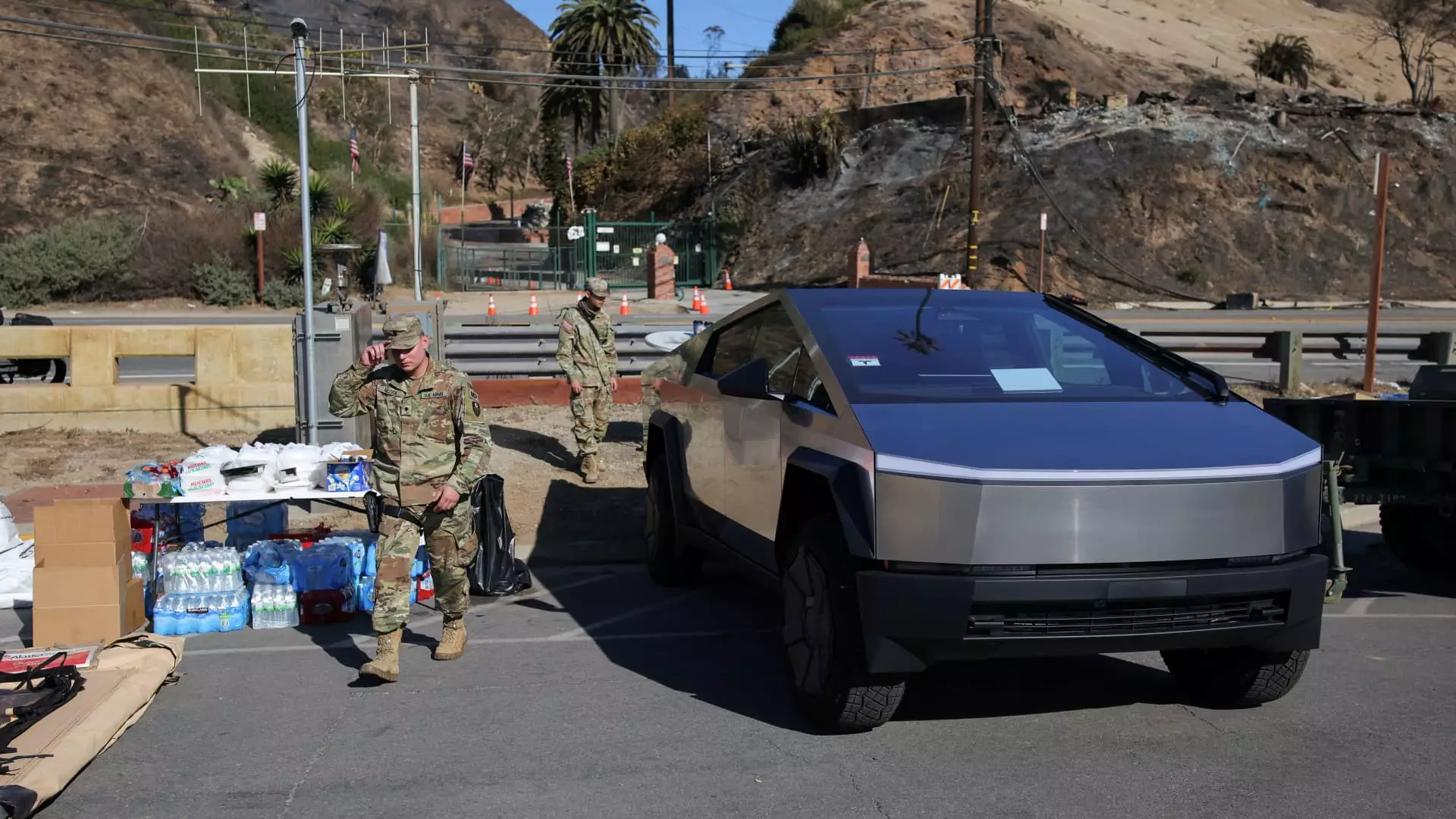Tesla has recently announced discounts on its Cybertruck offerings, a move that raises eyebrows regarding the overall health of the company’s sales strategy. With markdowns reaching up to $1,600 on new vehicles and approximately $2,600 on demo versions, these price cuts might appear appealing to consumers but hint at deeper issues within Tesla’s production and inventory management. It is notable that this decision comes after reports indicated a slowdown in production at Tesla’s Austin factory, suggesting that the supply-demand dynamics are misaligned. Given that deliveries of this highly anticipated vehicle began in 2023, the current price adjustments could signal excess inventory or weaker sales than initially projected.
Elon Musk unveiled the Cybertruck back in 2019, originally teasing a base price of around $40,000. Fast forward to 2024, and the starting price for customers in the U.S. is nearing $80,000, starkly contradicting those initial promises. Moreover, despite its early sales success, where it surpassed the Ford Lightning F-150 to become one of the best-selling electric vehicles (EVs) in the U.S., multiple recalls and rampant production issues have hindered its acceptance in the market. In fact, just last November, Tesla had to conduct its sixth recall in a single year due to defective drive inverters, painting a troubling picture for customer confidence and brand reliability.
Despite the Cybertruck’s initial momentum, Tesla has faced growing competition in the EV sector, which has led to a significant decline in its market share. In 2024, while overall U.S. EV sales surged by 7.3% year-over-year—accounting for approximately 1.3 million units—Tesla’s sales dropped by nearly 37,000 vehicles. The Model Y and Model 3 have maintained their status as the leading EVs due to their affordability and established reputation, but even these models are not immune to the shifts in consumer preference and the influx of diverse new models from various automakers.
The situation has become exacerbated by Musk’s recent apologies to customers in California for delays in Cybertruck deliveries. He voiced concerns on social media about repurposing the trucks to provide essential services, such as wireless internet access for areas affected by wildfires in Los Angeles. While this illustrates a commitment to community support, it also raises questions about the manufacturer’s prioritization of assets and delivery timelines. It reflects a broader challenge for the company, as balancing immediate community needs with fulfilling customer orders can complicate operational efficiency and customer satisfaction.
As Tesla navigates this multifaceted landscape, the company faces the crucial task of addressing production inefficiencies and restoring consumer trust. Discounts may attract initial interest, but sustainable growth depends on resolving manufacturing challenges, clarifying pricing structures, and delivering on customer expectations. With strong competition looming, Tesla must re-evaluate its strategy to maintain its position as a leader in the EV market while adapting to a rapidly evolving automotive sector. The fate of the Cybertruck—and indeed, Tesla’s broader sales performance—may very well depend on how the company responds to these challenges in the near future.


Leave a Reply